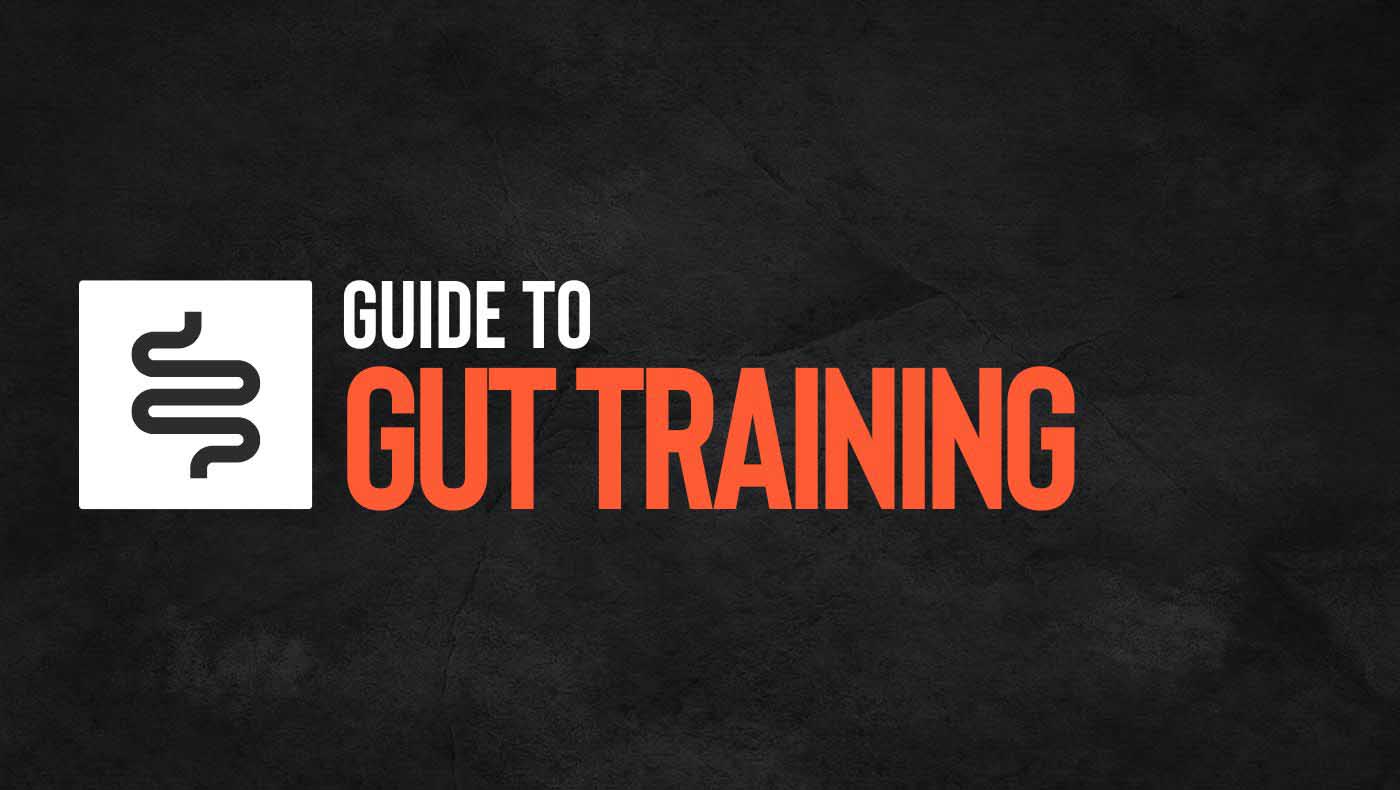
Gut Training for Endurance Athletes: Enhancing Performance through Digestion
Athletic training usually focuses on the muscles, lungs and heart. However, for endurance athletes, there is another crucial athletic organ that often gets overlooked: the gut.
To sustain their high energy levels for long periods of time, endurance athletes need to consume large amounts of carbohydrates during exercise. As renowned ultrarunner Ann Trason once said,
“Ultra marathons are just an eating and drinking competition with a little bit of running thrown in.”
In order to consume carbohydrates without experiencing gut discomfort, athletes should incorporate gut training. In this article, we’ll explore what gut training is, the science behind it, and gut training strategies for optimizing your digestive system for long events.
What Is Gut Training?
During exercise, the body diverts blood from the digestive system and to the muscles. While this is essential for the muscles to perform, the reduced blood flow slows down digestion and results in problems like gastrointestinal (GI) issues. The goal of gut training is to increase tolerance.
Gut Tolerance
Tolerance is your body's ability to handle large amounts of carbohydrates without triggering GI distress. This is particularly important because endurance athletes are prone to exercise-associated gastrointestinal symptoms (Ex-GIS) such as bloating, cramping, nausea, vomiting, and diarrhea.
Gut issues are common during endurance events. Studies report that anywhere from 30% to 90% of endurance athletes report having GI symptoms during exercise.
These symptoms are one of the most common reasons that athletes drop out of races. No one wins a medal for their sprint time to the nearest port-a-potty!
Eliminate Causes of Gut Distress
Before you start training your gut to tolerate and absorb carbohydrates better, it’s important that you remove common causes of gut distress during exercise. While these tactics aren’t necessarily gut “training,” they are still an essential part of your gut protocol.
1. Reduce Fiber
Fiber slows down the rate of gastric emptying, meaning food takes longer to leave your stomach and reach the intestines where it can be absorbed. To make matters worse, many types of fiber, such as cellulose, are not fully digestible.
You don’t want to be carrying fiber in your gut during a race because it might need to be “moved”!
To prevent these problems, you should reduce fiber from your diet 1-3 days before an event. Your meal before exercise should consist of no fiber and only a small amount of fat and protein, as these can also slow gastric emptying.
2. Optimize Hydration
During intense exercise, blood flow to the gut is already limited. When you combine the reduced blood flow with dehydration, the gut becomes particularly susceptible to damage. Not only does this mean immediate problems like cramps and nausea, but the gut can become permanently damaged.
To prevent this, athletes should make sure they are following a good hydration strategy. In particular, it is important to consume the electrolytes they are losing in sweat.
Read more about this in our hydration guide.
3. Use Glucose and Fructose for Fuel
Research shows that combining the carbohydrates glucose and fructose as fuel, particularly in the ideal 1:0.8 ratio, results in the body oxidizing the carbohydrates more efficiently. Fewer undigested carbohydrates will remain in the digestive tract, thus reducing the likelihood of GI distress.
Learn more about this in our fueling guide.
4. Avoid Solid Foods during Exercise
If you eat solid foods immediately before or during high-intensity exercise, they can jostle around in the stomach, causing symptoms like cramps and diarrhea.
The jostling of solid foods can also lead to long-term gut problems, such as leaky gut syndrome, because the reduced blood flow to the GI tract during exercise makes the gut lining more susceptible to damage.
For this reason, it’s better to consume fuel in a liquid or gel form during high-intensity exercise.
Gut Training Methods
Once you have eliminated causes of gut distress during exercise, you can move on to these methods for training your gut to better tolerate carbohydrates.
1. Gradually Increase Fuel Amounts during Exercise
The main method for training the gut is to gradually increase the amount of fuel you consume during your workout. This allows your body to get used to high amounts of carbohydrates without triggering GI symptoms.
To utilize this method, you should:
- Consume carbohydrates towards the end of your training session. For example, start by consuming 45g of carbohydrates as an energy gel 30 minutes before the end of your session.
- Increase the amount. Once your body gets used to the 45g near the end of your session, add more. For example, you could consume one energy gel 60 minutes before, and another energy gel 30 minutes before the session ends.
- Build up to 90 grams/hour. The body is capable of absorbing ~90g of carbohydrates per hour (in the form of glucose and fructose). Gradually work your way up to this amount during intense activity, and then during less-intense activity.
- Exceed your target. While most athletes probably won’t be able to absorb more than 90g of carbohydrates per hour, you should work on exceeding this amount in order to build up a tolerance.
2. Consume Large Volumes of Fluid during Exercise
Competitive eaters often train their stomachs to handle large volumes by consuming lots of water. This approach can also work for athletes. In one study, runners initially experienced discomfort when they consumed large amounts of fluid during exercise. After repeated sessions, they were able to handle the larger volumes without discomfort.
Research also shows that consuming large amounts of fluids can speed up gastric emptying, which in turn reduces stomach discomfort.
3. Exercise Immediately After a Meal
As a general guideline, athletes are told not to exercise right after a meal because it can cause GI distress. However, according to Asker Jeukendrup, exercising after a meal can increase tolerance. Athletes essentially get used to exercising with a full stomach, so GI symptoms like bloating and fullness are reduced.
Tolerance vs. Absorption
The ability to tolerate large amounts of carbohydrates during exercise does not necessarily mean your body can actually absorb those carbohydrates and using them as energy.
For example, you may be able to tolerate 90 grams of carbohydrates per hour without experiencing GI issues, but your body may only absorb 70 grams of them, leaving unused fuel in your digestive tract.
Can Gut Training Increase Carbohydrate Absorption?
You’ll find a lot of chatter online that gut training can improve the body’s ability to absorb carbohydrates. The idea is that consuming high amounts of carbohydrates can prompt the body to produce more carbohydrate transporters, thus increasing your body’s ability to absorb carbohydrates to use as fuel.
However, there is no evidence that gut training improves carbohydrate absorption. Gut training is for improving tolerance only.
Low-Carbohydrate Diets and Absorption
While eating a high carbohydrate diet will not increase the body’s ability to absorb carbohydrates, the reverse may be true: people on low-carbohydrate diets could lose their carbohydrate transporters, making it harder for them to absorb carbohydrates. This may be why so many athletes on keto diets report having GI issues during exercise.
For this reason, and because carbohydrates are such an important part of athletic performance, endurance athletes should avoid low-carbohydrate diets.
Read more about carbohydrates here.
Practice Your Nutritional Plan
No matter how well you train your gut, there are numerous factors that can affect digestion on race day. Unfortunately, you sometimes can’t realize what these factors are until you are 10 hours into a 12-hour race. Because of this, it is important to test your nutritional plan in conditions that simulate the race.
Not only should you simulate the race conditions, such as elevation and temperature, but also eat the same types of foods and fluids before and during the simulation. This will allow you to fine-tune your race-day nutrition strategy and avoid GI issues.
